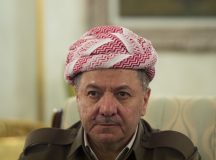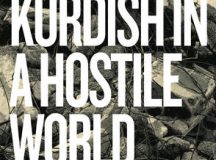The thesis of David E. Philips’ book The Great Betrayal: How America Abandoned The Kurds And Lost The Middle East is, as the title suggests, that the US tragically let down one of its most loyal allies in the Middle East, the Kurds, and in doing so undermined its own position in the region as well as its credibility. Philips’ goal in telling the story of how this came about is clear from the book’s dedication, which he dedicates to both his late father and ‘breaking the cycle of betrayal and abuse that has afflicted the Kurdish people’. The book primarily chronicles the 2017 Kurdish independence referendum and Iraq’s subsequent aggression against the autonomous region in its wake. Then it follows this up by arguing that the Syrian Kurds were similarly betrayed by the US when Washington did little to prevent Turkey from launching an aggressive and unprovoked invasion of their isolated northwestern region of Afrin. All this, he argues, helped empower Turkey, Iran, Russia and the Syrian regime in the wider region.
One greatly sympathises with Philips’ contention that Washington’s response to the referendum and its inaction over Iraq’s military takeover of Kirkuk from the Kurds constituted a low-point in US relations with an ally that had sacrificed over 1,700 of its Peshmerga forces to help combat the threat posed by the Islamic State. Those tense few weeks saw renewed feelings of betrayal among the Kurdish population, who are generally very pro-American and pro-Western in a region that generally is not. It’s understandable why Kurds feared another betrayal as they vividly remember 1975 when the US failed to prevent its ally, the Shah of Iran, from unilaterally pulling the plug on a cynical covert operation in support of their war with Iraq to make a deal with Saddam Hussein, which allowed him to brutally crush the Kurds unopposed. They also remember President George H.W. Bush’s initial inaction in the aftermath of the 1991 Persian Gulf War when Saddam Hussein crushed their uprising, which saw millions of Kurds flee in terror into neighbouring Iran and Turkey. Bush had implied that the US would support the Kurdish uprising but he didn’t initially do anything when the Kurds revolted against Saddam and were brutally suppressed. However, American public opinion, along with that of Britain and France, compelled Bush to reverse course and intervene through the establishment of the no-fly zone over Kurdistan – which doubtlessly saved countless numbers of Kurdish lives and incubated the autonomous region we have today.
As with most books dealing with the Kurdish question, Philips gives his readers a basic history lesson on how the Kurds were initially denied statehood and self-determination in the 1920s before going into recent events. However, even the book’s basic concise history, of which there is an abundance of easily accessible source material in English, has far too many very simplistic mistakes as does its account of events that transpired less than two years ago.
For example, when the Shah of Iran signed the Algiers Agreement with Iraqi Vice President Saddam Hussein in 1975, which saw Hussein give up Iraq’s claim to the east bank of the Shatt al-Arab river in return for the Shah withdrawing his aforementioned military support of Iraq’s Kurds, Philips bizarrely writes: “The Algiers Accord signed in that year marked the end of the Mahabad Republic.” The Mahabad Republic was the short-lived Soviet-backed state that seceded from Iran in January 1946 and was completely dismantled by the Shah the following December. What had this to do with the Algiers Agreement?
Philips also seemingly mixes up the First Iraqi-Kurdish War (1961-70) with the Second Iraqi-Kurdish War (1974-75) when he notes that during the first period the US gave Kurdish leader Mullah Mustafa Barzani ‘just enough support to sustain the fight, but not enough to prevail’. That was what happened in the mid-1970s in the Second Iraqi Kurdish War; in the First Iraqi-Kurdish War the US wasn’t giving any support to the Kurds. A mere two pages later, Philips writes that Barzani made Iran his base of operations in 1974. In fact, the Kurdish leader was for the most part based in his headquarters in the Hajj Umran-Rawanduz area within Iraqi Kurdistan’s boundaries near the Iranian border.
Then there are some glaring errors regarding the years of certain events. For example, the author writes that the Iran-Iraq War began in 1980 and ended in 1990, rather than 1980-88. At one point he accidentally says that Mustafa Barzani passed away on 1 March 1976, when in reality it was exactly three years later. Also, he tells us that the Kurdistan Free Life Party (PJAK), the Iranian Kurdish wing of the Kurdistan Workers’ Party (PKK), was established in 1984, the same year as the PKK. The PKK was actually founded in 1978, it began its armed struggle against the Turkish state in 1984, and PJAK was founded much later in 2004. Elsewhere, Philips refers to the period of influxes of internally displaced persons and refugees into Iraqi Kurdistan as ‘the first years of the twentieth century’. Some of these dates are referred to correctly elsewhere in the book, indicating rushed editing and a chronic shortage of both fact-checking and basic revision. Several source links throughout the footnotes were also accessed on the same day, which again suggests rushed revision and possibly even research itself.
The author also writes that: ‘In 1988, Iran was the first country to open a consulate in Erbil.’ Iraq still controlled Erbil at that time and the Kurds were still four years away from establishing the Kurdistan Regional Government (KRG), so this simply could not have been the case. He writes that the Islamic State launched the siege of the Syrian Kurdish border city of Kobani in the autumn of 2015. Islamic State launched its siege on Kobani in September 2014 and it was completely broken by the Kurds, with US support, in early 2015.
During the brief battle between the Iraqi Army and the Kurdish Peshmerga in 20 October 2017, Philips says the Peshmerga were assisted by the Iranian Kurdish Parti Azadi Kurdistan/Kurdistan Freedom Party, whose leader bears an uncanny resemblance to Joseph Stalin, but incorrectly uses the acronym PJAK instead of PAK. PJAK certainly wasn’t present during that battle and the two groups are completely distinct. He also writes that: ‘Jalal Talabani and the PUK [Patriotic Union of Kurdistan] adopted [PKK founder Abdulla] Ocalan’s ideology, which gained traction in disputed areas, like Kirkuk, and areas with minority groups, such as the Yazidis in Sinjar.’ It’s unclear what he means exactly by this but he appears to suggest that the PUK espouses and promulgates Ocalan’s ideology, or is Apoist, hence staunchly adheres to Ocalan’s ideology, like the PKK and its affiliates, which certainly isn’t true.
The author makes a particularly critical mistake when he writes that Ayatollah “Sistani and other Shi’ite clerics wanted to establish a theocratic Shi’ite state modeled on Iran” after the 2003 Anglo-American invasion. In reality, Sistani has consistently advocated for the polar opposite, in adherence to a tradition among many prominent Iraqi Shi’ite clerics who seek to use their influence to advise rather than rule like the clerics in neighbouring Iran do.
In the aftermath of the referendum, Philips writes: ‘Rather than seal its border crossings, however, Iran sought to repair ties.’ Tehran completely closed the border right after the referendum and didn’t open it until early the following year. Then, in the epilogue, he writes: ‘In Iraq, Turkey was quick to close the border and ban flights to Iraqi Kurdistan after the referendum.’ Turkey, while it did certainly threaten Iraqi Kurdistan over the referendum, helped enforce Baghdad’s flight ban but never closed the border as Iran did. In other words, Philips got the reactions of Kurdistan’s two neighbours the complete wrong way around.
For a book shorter than 300 pages, including footnotes, with several short concise accounts about numerous complex events, such enormous errors are simply inexcusable. Other than relying on open source material, mostly news reports and analyses, Philips did go to the trouble of interviewing Kurdish officials, most notably former Kirkuk Governor Najmaldin Karim, Chancellor of the Kurdistan Region Security Council (KRSC) Masrour Barzani and Deputy Prime Minister Qubad Talabani, who all had some noteworthy perspectives that they expressed quite candidly.
The biggest personal disappointment I had with the book, as someone who lived in Erbil throughout the referendum and the Kirkuk crisis, was its failure to recapture the feeling of anxiety those in the region faced at the time. The first shooting war between the Iraqi armed forces and the Kurdish Peshmerga in the post-Saddam Hussein era isn’t recounted in a way that conveys to the reader just how distressing that time was for Iraqi Kurdistan, which had witnessed the rapid closure of its airports and its isolation by far more powerful neighbours, less than a month after the jubilant referendum itself. The region went from the war with Islamic State and cooperation between the Iraqi Army and Peshmerga in the early stages of the Battle of Mosul, which were heralded as ‘historic’ at the time, to Iraqi state-sanctioned Shi’ite paramilitaries shooting Peshmerga just a year, almost to the day, later. Philips devotes a mere paragraph to those clashes between the Iraqis and Peshmerga in late October 2017, in which the Peshmerga exposed those paramilitaries use of American-supplied Iraqi Army M1 Abrams main battle tanks by destroying one with an anti-tank missile and releasing video of the burnt wreckage as proof. He also doesn’t mention the rare protest that ensued outside the US consulate in Erbil by Kurds who felt betrayed by their American ally. Furthermore, in those tense days, Washington downplayed the fact that Iranian-backed militias were using M1 tanks meant for the Iraqi Army against its Kurdish ally. Even a brief mention of this would have significantly reinforced the book’s broader thesis.
The few pages he spends dealing on what Kirkuk Governor Najmaldin Karim’s experienced during the Iraqi takeover of his city, on the other hand, are quite good. Karim, whom I interviewed shortly after his ouster, unequivocally insists that members of his own party, the PUK, surrendered Kirkuk in a secret deal with Baghdad. Philips describes how Karim was warned by the Americans that Iranian-backed Shiite paramilitaries ‘were just 40 meters’ from his residence and were coming to either capture or kill him. Karim took to the streets in an attempt to rally the people against an Iraqi attack. Moments after leaving his residence he got a call directly from the PUK’s Bafel Talabani, one of the figures suspected of orchestrating the PUK’s handover of Kirkuk, who insisted Karim should remain in his residence. Philips writes that Karim suspected a trap and unequivocally told Talabani that: ‘You’re not going to give me orders on where I can and can’t go in my city while you’re holed up in Suleimani. F**k you.’ After the PUK Peshmerga, the primary Kurdish military force in the city, promptly withdrew on 16 October Karim had no choice but to leave the city, which Iraq conquered in a mere few hours with little resistance in a crushing and demoralising blow to the Kurds.
Elsewhere the author seemingly vacillates between his book’s contention that the Iraqi Kurds were let down and betrayed by the US to suggesting that the Kurds – Masoud Barzani’s Kurdistan Democratic Party (KDP), which introduced it, in particular – essentially invited the hostilities on themselves by pushing forward with the referendum in spite of the widespread opposition from Iraq and its far more powerful neighbours. While tensions over the referendum unquestionably sped up Iraq’s takeover of Kirkuk there were indications beforehand that Iraq would never have let the post-June 2014 status quo, hence full Kurdish control over Kirkuk, persist. For example, as early as February 2017, months before the Kurds even announced the date of the referendum, Peshmerga forces in Kirkuk suspected that a buildup of Iraqi Shi’ite paramilitaries south of their positions was being prepared for use against them rather than the Islamic State in the area, which is exactly what happened. Philips does not mention such important context.
The last quarter of the book briefly tries to illustrate how the Syrian Kurds were let down by the US when Turkey invaded Afrin in early 2018. Philips argues that Iran, Russia and Turkey constitute a new axis of evil in the region which arose thanks to American inaction and indecisiveness. The book feels like it loses its primary focus at that point since the Kurds are discussed much less. Also, while published this year the book’s final draft appears to have been submitted before the results of the May 2018 Iraqi parliamentary elections and therefore already feels quite dated.
All in all, I agree with Philips’ general thesis and firmly believe that a book chronicling the tragedy which befell Iraqi Kurdistan in the fall of 2017 is necessary as well as important. Unfortunately, the fundamental mistakes littered throughout this book fatally undermines the case it makes and ultimately leaves one wanting a much more carefully researched account on the events of this period.





































Comments are closed.